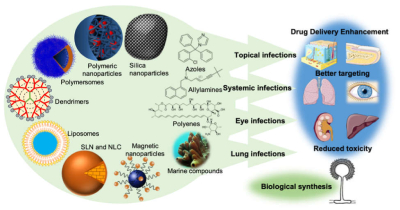Parasitic contaminations are killing a large number of Americans every year, some with a horribleness pace of almost 80%. To exacerbate the situation, just a modest bunch of antifungal medicines are accessible, and, surprisingly, those are turning out to be less successful as organisms become more safe. Nonetheless, College of Oklahoma specialists have as of late distributed discoveries in the Diary of Normal Items showing that a clever advancement treatment might have been found.
“The particle we’re amped up for is called persephacin,” said Robert Cichewicz, Ph.D., head examiner and Officials Teacher in the Branch of Science and Organic chemistry, Evade Family School of Expressions and Sciences at OU. ” This antifungal revelation seems to deal with a wide range of irresistible growths, and it is sensibly non-poisonous to human cells, which is an enormous arrangement in light of the fact that numerous ongoing medicines are harmful to the human body.”
The ascent in parasitic contaminations is expected, to some extent, to the fruitful treatment of different sicknesses. As individuals live longer and effectively go through medicines like chemotherapy and organ transfers, they frequently live with debilitated safe frameworks. At the point when tranquilizes that treat joint pain and different diseases that likewise debilitate insusceptible frameworks are included with everything else, a powerful coincidence is made for possibly destructive parasitic contaminations.
Cichewicz, who has been investigating parasites for almost 20 years, drives the Normal Items Disclosure Gathering at OU. This group of scientists found this clever particle and fostered an extraordinary technique for testing plants for their antifungal properties.
“Parasites are viewed as all through the herbal world, and plants and organisms frequently cooperate. A portion of these parasites kill contenders or deflect bugs from eating the plant,” Cichewicz said. ” That’s what we guessed if these plant-staying parasites, known as endophytes, could assist the plants with warding off contaminations by killing the attacking organisms, then these particles could likewise have the option to shield people and creatures from contagious microorganisms. Incidentally, we were correct.”
The group fostered a clever method for obtaining leaf tests utilizing a laser gadget called the Quick Laser-Empowered Endophyte Catcher, or Armada. This strategy produces tests in a sterile climate and definitely builds the quantity of tests that can be obtained.
“Utilizing customary techniques, we could deal with about four to six examples each moment,” Cichewicz said. ” Be that as it may, our Armada framework is fit for aseptically creating between 500-600 tissue examples in a short time. This permits us to evaluate more examples and improves the chance for potential medication revelations quickly.”
With help from the Workplace of Innovation Commercialization at the College of Oklahoma, Cichewicz was granted a U.S. patent for utilizing persephacin to control irresistible microorganisms.
“It’s required us a long investment to arrive at this point, yet presently we’re wanting to work with an industry accomplice to assist us with fostering this treatment,” Cichewicz said. ” Antifungal opposition continues to develop, and this could give another other option. That is the reason this atom is so invigorating.”















